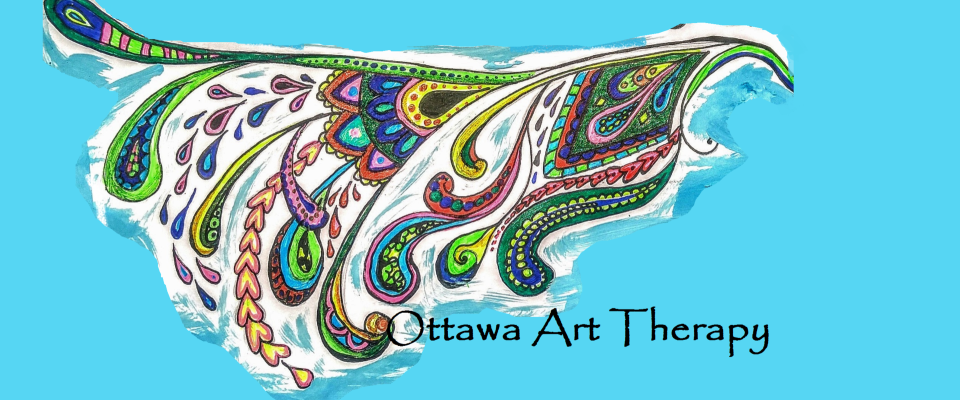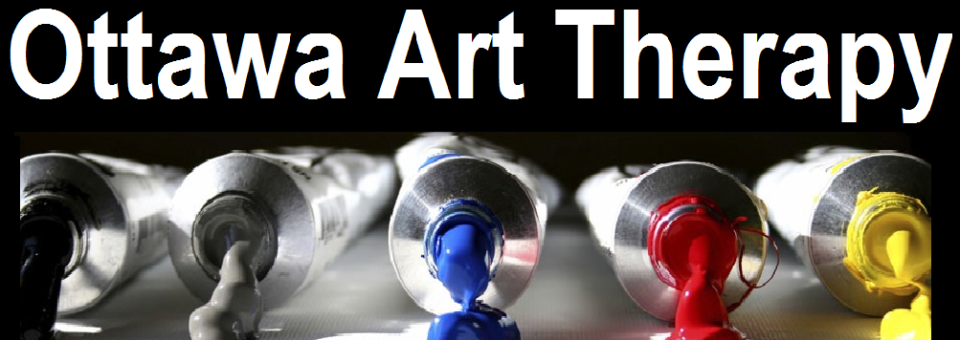Art Therapy for Children with Autism
Zwaigenbaum et al. (2005) states that while many can fall under the diagnosis of the ASD no one individual is the same. Their neurological makeups vary and thus so do their symptoms. Therefore,
while some have fully developed speech patterns but cannot pick up on social cues; others may be rather interactive but lack productive verbalization. Some individuals are even affected by seizures.
Greenspan and Weider (1999) argue that ASD, like all disorders, is multifactorial and many of its aspects are relevant and present in other disorders outside ASD. Individuals affected by ASD should
be given the opportunity to access a variety of resources in order to have a truly individualized treatment approach.
What are the potential benefits of Art Therapy for my child?
Physical benefits.
Autism Spectrum Disorder is accompanied by several physical manifestations such as poor fine motor skills, lack of muscle control, and need for sensory stimulation (DSM-IV-TR, 2000). To avoid negative behaviours and develop practical motor skills it is necessary to engage the child in an activity of interest and to provide the needed sensory stimulation. Engaging in art is not just naturally fun for most children, it also holds their attention, relieves boredom, and provides the necessary sensory interaction. This lowers negative stimming techniques and is reinforced by a safe and calm environment during the sessions. These factors contribute to the success of art therapy as an intervention for children with autism (Miller & Nickel, 2008).
Fine motor skills are often an area of great difficulty for individuals with autism (DSM-IV-TR, 2000). Artistic expression through mediums such as paint, crayons, or clay helps practice and enhance fine motor control (Waller, 2006). While it is important to address this issue through tasks such as writing, art therapy is often more enjoyable for the child and easier to engage them in. Furthermore, when children work with artistic mediums their muscle stimulation goes beyond the fine motor. There is much movement in creative expression as well as a lot of sitting still. Finding that balance works on body centring and grounding, another important aspect in the treatment of ASD.
Emotional benefits.
As well as addressing the physical symptoms of Autism Spectrum Disorder, art therapy also works on the emotional aspect. One of the most defining factors of individuals with ASD is the inability for imaginative thinking, appropriate communication, and poor social relational skills (DSM-IV-TR, 2000). When there is any sort of communication barrier, art can be used as a means of expression (Evans, 1998). This expression ranges in nature. It may be asking the child his/her favourite colour and using illustration to make it clearer; it could be the individual expressing the inner struggle of having this disorder; or it could be a means of self-search to establish an identity. All are very prevalent in art therapy sessions with people with autism. Art as self-expression allows the child to tell their story without the highly stressful verbal component. This strengthens the child’s understanding of their surroundings, aids in social interactions, and helps build a relationship with the therapist and with others (Evans, 1998). Social relatedness can be easily generated through art. This can be in the form of simply connecting through the art piece or through explaining social etiquette using an artistic medium. The latter involves working through ideas of empathy and emotional regulation (Waller, 2006).
Children with autism often have difficulties regulating their emotions (DSM-IV-TR, 2000). This may be out of frustration or it may be because they are unaware of what is appropriate during social conduct (Zwaigenbaum et al., 2005). Frustration can be a cause of boredom, rigidity, or the inability to convey information appropriately. (Evans & Dubowski, 2001). Art therapy can help practically address emotional regulation by providing a means of communication, grounding, and self-expression (Evans, 1998).
Finally, two of the most prevailing symptoms of ASD that art therapy addresses are inflexibility and difficulties with imaginative thinking. Art therapy sessions provide the opportunity to decrease rigidities and foster imagination (Evans & Dubowski, 2001). Children naturally learn to expand their interest, and build on their imaginative abilities through creative expression (Waller, 2006). Why not provide children with autism the environment for such important development?
Mental benefits.
Mental stimulation is crucial in childhood. It fosters brain activity and gives a foundation of knowledge that can be built on in the future. To relate this knowledge to a child with autism different techniques must be implemented (Evans & Dubowski, 2001). Art therapy addresses the educational component in a unique way. Education during the art therapy session may mean learning how to use the media, working on socialization during the art making, as well as practising fine motor control (Evans & Dubowski, 2001). Most children enjoy this learning opportunity as it is fun mental stimulation and results in the desired product (Waller, 2006). Learning is inevitable when the creative mind is stimulated (Case & Dalley, 1992). Many children explore ideas through their art work; exercises like drawing different animals and naming them can expand their vocabulary (Waller, 2006). There are many exercises like this for a range of ages that can be implemented in the art therapy sessions. Although some argue that art therapy is not about education, learning through the art is important and comes naturally (Case & Dalley, 1992). This is a part of integrating different aspects of therapy in treatment.
Finally, during the whole process of art-making any and every client works on their concentration (Evans & Dubowski, 2001). This is a crucial aspect for children with autism, since many have difficulties engaging in one task for extended periods of time. Depending on where the individual is on the autism spectrum, at the beginning it may be difficult to ground them. However over time, since most enjoy the process of making art, children learn to concentrate for longer and will take on bigger projects (Evans, 1998). Since individuals with ASD usually have atypical visual spatial skills (Bertone, Mottron, Jelenic & Faubert, 2005) this concentration also improves their orientation abilities. Engaging in art therapy usually works on hand-eye coordination, a very useful task beyond the art therapy setting, as well as spatial mapping, also an important skill for everyday life.
Neurobiological evidence.
Since brain abnormalities have been found in individuals with ASD, it is important to also consider the neurobiological influence of art therapy. As described, people with autism are likely to show an increase in neural density(Courchesne & Pierce, 2005). This is usually related to poor long-distance connectivity, which jeopardizes neural plasticity. Neuroplasticity refers to the natural ability of neurons to alter their own patterns of activation in response to mental processes (Frank, 2008). In brain-damaged patients, for example, this means one part of the brain sometimes reorganizes itself to take on the functions of the damaged area. Lambert (2009) argues that art therapy activates neurons during the creative process, referred to as liminal space. In this space the neural activation enhances neural plasticity. This is very important for individuals with autism, since enhancing brain connectivity results in more optimal neural function (Stuss, Winocour & Robertson, 1999).
The primary motor cortex (M1) is hypothesised to be one of the affected regions of the brain of a person with autism (Casanova et al., 2006). It is responsible for planning movements and controlling actions based on sensory input. Abnormalities in the M1 can result in poor muscle control and difficulties in fine motor skills. By activating muscles and practising fine motor skills in the art therapy session, the M1 is activated and functions optimized. As mentioned, visual spatial skills are an area where children with autism differ from typical developing children. It has also been suggested that the organization in the visual cortex (V1) is atypical in those with ASD (Casanova et al., 2006). As art therapy works on visual-spatial skills it optimizes the V1 through neural activation. Abnormalities are also seen in the frontal association cortex (Casanova et al., 2006). This part of the brain is responsible for planning (Purves et al., 2001). Fostering creativity and engaging the child in art helps go beyond the typical inflexibility related to ASD. Planning is enhanced in the art therapy sessions through progression of the art making and by learning the functionality of the mediums (Lusebrink, 2004). This skill can be translated into everyday life.
Integration.
The most important aspect of art therapy, and one of the main reasons why it has been successful with children with ASD, is that it integrates all the different aspects of the disorder. It is not only a productive and leisurely activity that relieves boredom and decreases stimming in individuals with ASD, but also a means of addressing a variety of physical, emotional, and mental difficulties (Epp, 2008). Art therapy naturally works with different features of the disorder optimising overall function. Doing so, it influences the neural organization by activating regions with ASD specific abnormalities and enhancing neuroplasticity. Art therapy services can be successfully incorporated into an individual’s treatment to improve and enhance their physical, mental and emotional well-being.
It is time to move away from a one size fits all treatment; to realize that more can be done; and to make further progress in a disorder affecting so many individuals. To treat a spectrum of symptoms a variety of approaches much be utilized. It is up to mental health professionals to make these interventions accessible.



